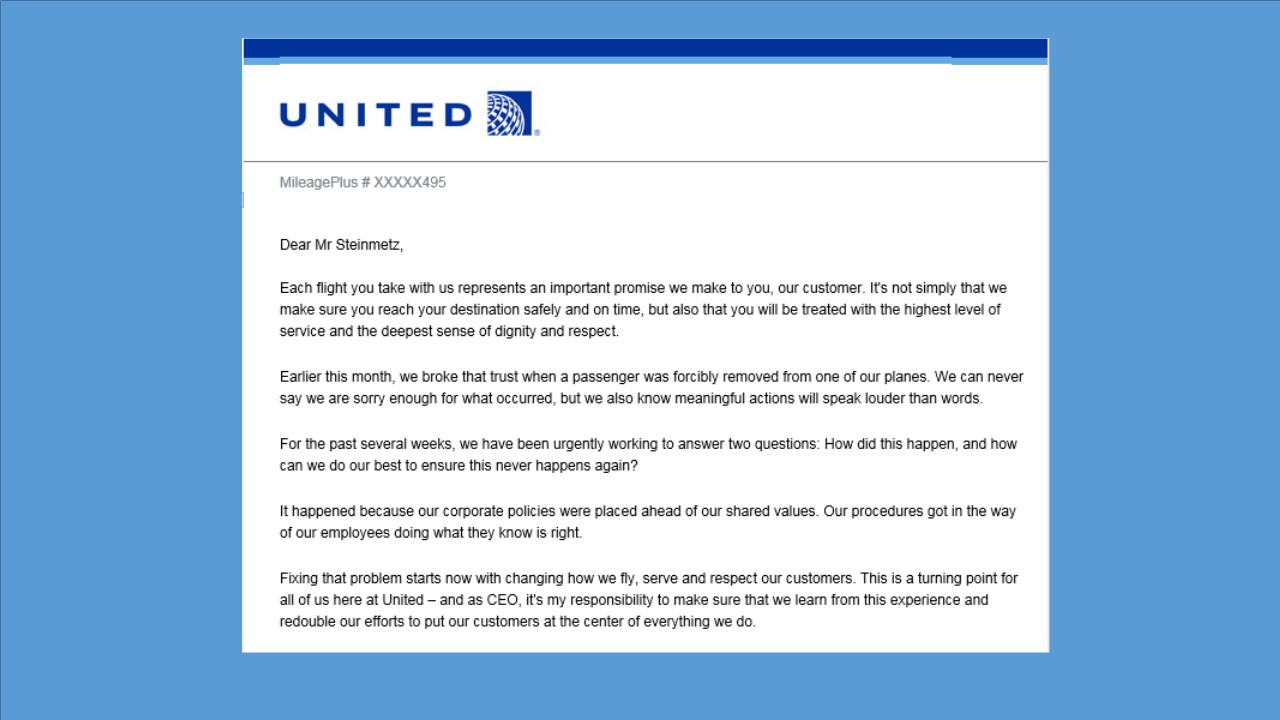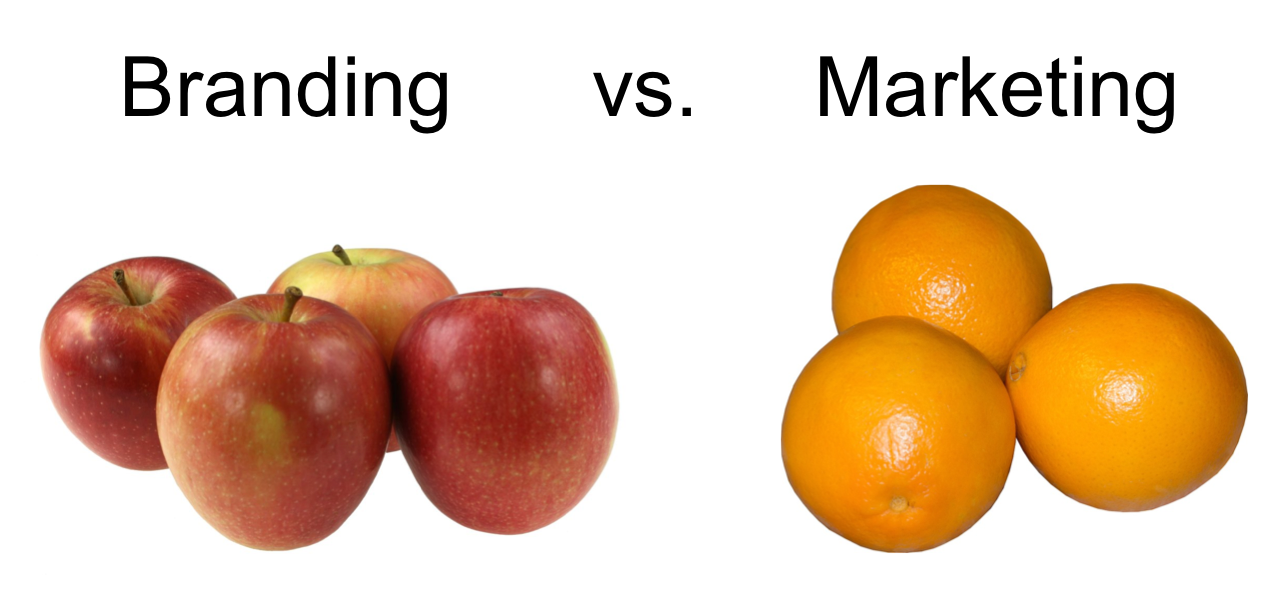Inward Blog
Viewing entries tagged with 'ar'

Learn about music video commercials and who was the first company to use this creative technique
May 10, 2017
Over the years, many companies have applied the idea of incorporating popular songs sung by recognizable artists to help promote their products and services. It has created an often used genre of advertising. Walmart and Dodge Ram Trucks have adopted this approach recently in their new TV advertising campaigns.
Posted by Allan Steinmetz at 1:00am
Walmart TV commercials, Ram Trucks TV commercials, Music Video Commercials, 1986 ad breakthroughs, Mercury Sable spots

United Airlines is reaching out to the public after their public relations mess
May 3, 2017
Admission of guilt – Promises to change - Last week United Continental’s CEO, Oscar Munoz sent out an apology letter to all frequent flyer customers and placed a full-page ad in major newspapers including the Wall Street Journal. This came after two tumultuous weeks of public embarrassments, passenger settlements and internal reflection. I can only imagine what it was like working at United Continental last week. Finger-pointing, chaos, urgency, blame, anger and depression.
Posted by Allan Steinmetz at 1:00am
Crises Communications, Employee Communications, PR Nightmare, Internal employee Communications
Will Outsourcing Kill Employee Engagement?
February 16, 2017
According to a recent front-page article in the Wall Street Journal entitled “The End of Employees”, US companies are shifting work once considered to be core company functions to contractors, which is pruning costs and job security for workers. The article states, “never before have American companies tried so hard to employee so few people. The outsourcing wave that moved apparel making jobs to China and call center operations to India is now just as likely to happen inside companies across the US and in almost every industry.”
Posted by Allan Steinmetz at 11:00am
Employee Engagement, Outsourcing, Temporary Workers, Contractors
What If We Invest in People and They Leave?
November 29, 2016
Recently, in my Linked-In Network, I saw a post with a quote by Peter Baeklund that captured the essence of why Inward Strategic Consulting is passionate about what we do.
Posted by Rick DeMarco at 11:00am

Personalizing Employee Onboarding
August 16, 2016
From a young age, we are all taught that first impressions are often the most important. This oft-repeated advice is typically associated with an individual meeting someone for the first time, whether it is for an interview, the first day of a new job, or even a date. While this is indeed good advice for an individual, we believe that companies should also adopt this mentality with incoming employees. When onboarding new employees, first impressions leave a lasting effect that can determine an employee’s tenure, perceptions, attitude, and career trajectory with the company. Companies should consider reaching out to incoming employees even before their start date, personalizing their experience to ensure a smooth transition from day one. In this way, organizations can more effectively connect these incoming employees with their culture, mission, vision, values, expected behaviors, and ultimately true employee engagement.
Posted by Matt Manning at 11:00am

What To Look For In An External Partner To Support Your Employee Engagement Strategy
August 10, 2016
Last week, I wrote about the challenge of securing necessary resources to develop and execute an effective strategy to create a culture of high engagement. Although all evidence would indicate that companies around the globe recognize employee engagement as one of their top challenges and key strategies to drive growth, customer loyalty, and satisfaction; those driving the efforts often struggle to obtain a budget and team to accomplish their objectives.
Posted by Rick DeMarco at 11:00am
Employee Engagement, Partner, Customer Loyalty, Satisfaction

There Is A Difference Between Branding And Marketing
July 26, 2016
I had a very interesting meeting last week with the COO of a major Fortune 100 company with revenues in excess of $5 billion and over 80,000 employees worldwide. The purpose of the meeting was to discuss how to "brand" the company and accelerate a new corporate strategy of growing revenue, entering new markets, increasing competitiveness, and becoming more distinctive.
It didn't take long for me to realize that there was quite a bit of confusion between "branding" and "marketing." The executive appeared visibly frustrated by his previous meetings with two large and traditional brand-identity firms who talked about identity standards, design continuity, and logos. He was clear about one thing: he liked the current logo and identity and wasn't about to change them. What he was looking for, however, was a process to unite his people behind a common vision and values. He also wanted "branding" to help accelerate business development.
Using our Dialogue Marketing approach, I explained the difference between branding and marketing. I was, however, left wondering why many other senior executives cannot make this distinction. I'd like to take a shot at clarifying the difference, and then explain how Dialogue Marketing unites these two distinct activities into a single, integrated process.
Branding vs. Marketing: is there a difference?
I went straight to the internet and found several different definitions for branding and marketing. The best definition for a brand, I thought, was from Wikipedia:
A brand is the symbolic embodiment of all the information connected with a product or service. A brand typically includes a name, logo, and other visual elements such as images or symbols. It also encompasses the set of expectations associated with a product or service which typically arise in the minds of people. Such people include employees of the brand owner, people involved with distribution, sale or supply of the product or service, and ultimate consumers.
Defining marketing was not as easy. I found definitions that covered the gambit from advertising to a planning process to sales development and beyond. No wonder an executive who does not have day-to-day responsibilities for marketing is confused! Is marketing at a trade show branding? Is launching a new product or web site branding? The answer could easily be yes for most people, but there is a distinction that we must keep in mind.
Since I wasn't able find a good definition for marketing, I am providing the one we use here at Inward Strategic Consulting:
Marketing is a process of planning and identifying the needs and wants of a target market and meeting them through a series of integrated tactical activities. Pricing, product features, distribution/selling, advertising/PR/promotions, and retailing are all part of marketing. Its goals are to outperform the competition, create demand, and maintain customer loyalty.
Now the distinction between the two definitions is clear. Branding deals with the look, image, tone, and manner of the company and its products and services. Marketing is about communicating the company's brand through a planned series of integrated promotional and sales activities. It really is that simple. So why the confusion?
Branding companies, PR firms, and management consultants muddy the waters
Over the years, as definitions and activities have become blurred, people have come to see branding and marketing as the same thing.
One factor that has contributed to the confusion is the way that business has changed. A big part of the problem is our marketing and communications profession, with its zeal to grow revenue, develop client relationships, and expand business. The branding firms have extended their activities beyond creative identity, reputation management, and design to manage trade shows, write collateral, and produce sales events and videos.
Advertising and public relations firms, in addition to designing ads, logos, and tag lines, are entering new fields: interactive employee engagement, guerilla marketing, and analyst relations. Some of them even compete with their sister brand agencies. It would be in the best interests of their clients to integrate their talents and capabilities, but they are all too busy morphing into amalgamated communications companies.
Then there are the management consulting firms, all about process improvement, measurement, and accountability. They claim to understand and care about the difference between good and bad branding-and certainly have strong opinions if you disagree with them. But they do view branding as a matter-of-fact rather than a creative process. They measure everything, applying marketing econometrics and analytics to project customer differentials and the inclination towards improved market performance and acceptance. (Did you have to read that sentence twice to understand what it is they do?) They have process maps, formulas, and models. Boy, do they have models!
To management consultants, branding is a marketing process and marketing is a sales process. They, too, have contributed to the blurring of brands and marketing.
Dialogue Marketing makes it clear again
At Inward we believe that it is time to return to clear definitions of branding and marketing. While we acknowledge and reinforce that they are distinctive and different, we do need to recognize how and when they work together. What we need is an integrated approach. Here it is:
Branding creates a reputation, a look and image, a tone and manner, even an attitude that makes the company stand out to customers. Marketing launches that identity through sales, with an integrated plan of activities designed to reach the company's objectives.
These two distinct activities are unified in a single process we call Dialogue Marketing:
Dialogue Marketing establishes brand architecture and maintains communication with the customer throughout the lifecycle of the relationship. The process starts by building awareness. It continues with one-to-one dialogue and incentive marketing or closing the sale. Relationship marketing maintains customer loyalty with special communications and deals.
There are two parts to the Dialogue Marketing process: establishing the brand followed by marketing and sales development.
Part 1: Establishing the brand
Posted by Allan Steinmetz at 1:00pm
Branding, Marketing, Employee Engagement, Dialogue Marketing

Enterprise Engagement Alliance and Engagement Strategies Media Honors Inward With 'First' Award
May 4, 2016
We are humbled and proud to announce that the Enterprise Engagement Alliance has bestowed the 'First' award to Inward Strategic Consulting as one of three top Solution Provider honorees last week at their EEA expo and Gala dinner in Orlando. The 'First' Award winners were selected by EEA Engagement Strategies Media (ESM) editorial contributors based on their actual first-hand knowledge of these companies, confirming without question that each of the honorees was indeed a pioneer at seeking to profit from the concept of linking engagement across the entire organization in a strategic way to achieve key goals.
Posted by Allan Steinmetz at 11:00am

Subaru Puts Man's Best Friend In The Driver's Seat
February 25, 2016
Kudos To Subaru For Their Barkley Dog Spots
Posted by Allan Steinmetz at 11:00am

“Back to the Future” with Jim Speros, EVP Communications of Fidelity Investments - Reminiscing about AT&T
January 26, 2016
The other day I had the pleasure of visiting with Jim Speros, who is the EVP of Corporate Communications for Fidelity Investments. Jim has had a remarkable career in a variety of marketing and advertising roles over the last 39 years. In addition to the last eight years he has served Fidelity Investments, he has also worked at Marsh-McLennan Companies, Ernst & Young and AT&T.
Posted by Allan Steinmetz at 11:00am
